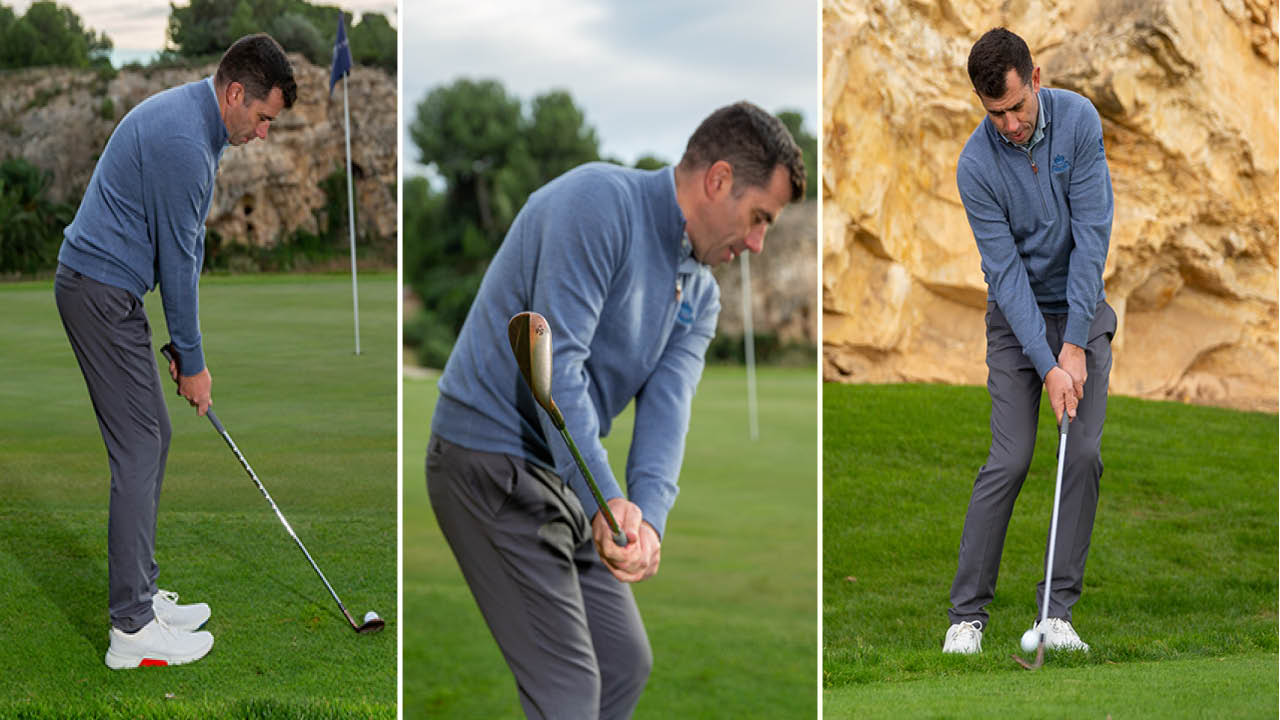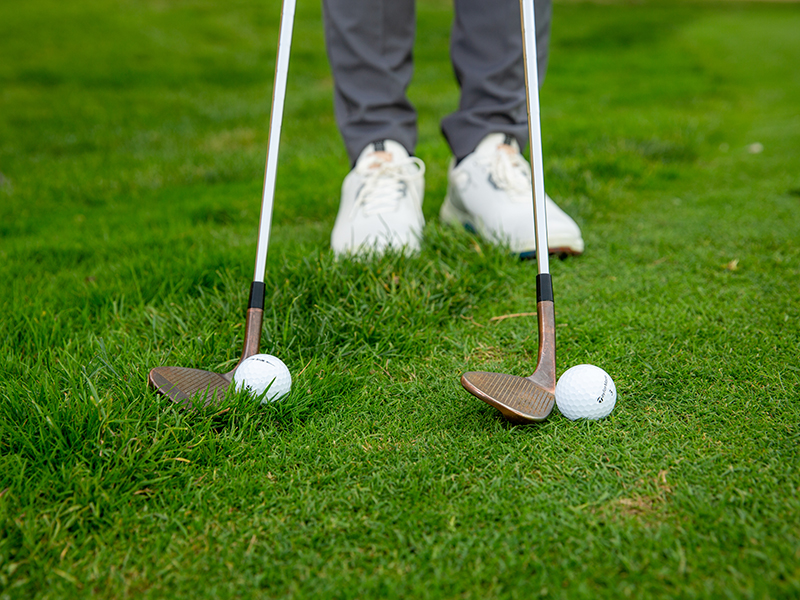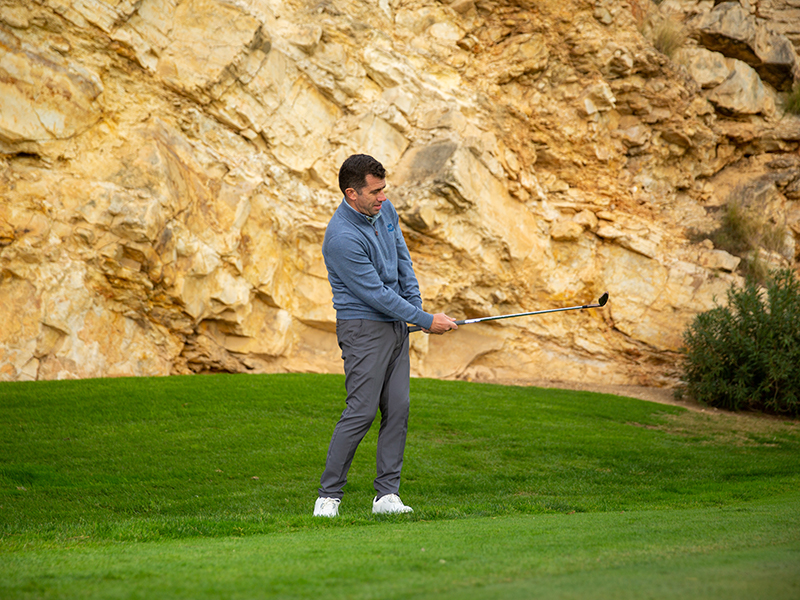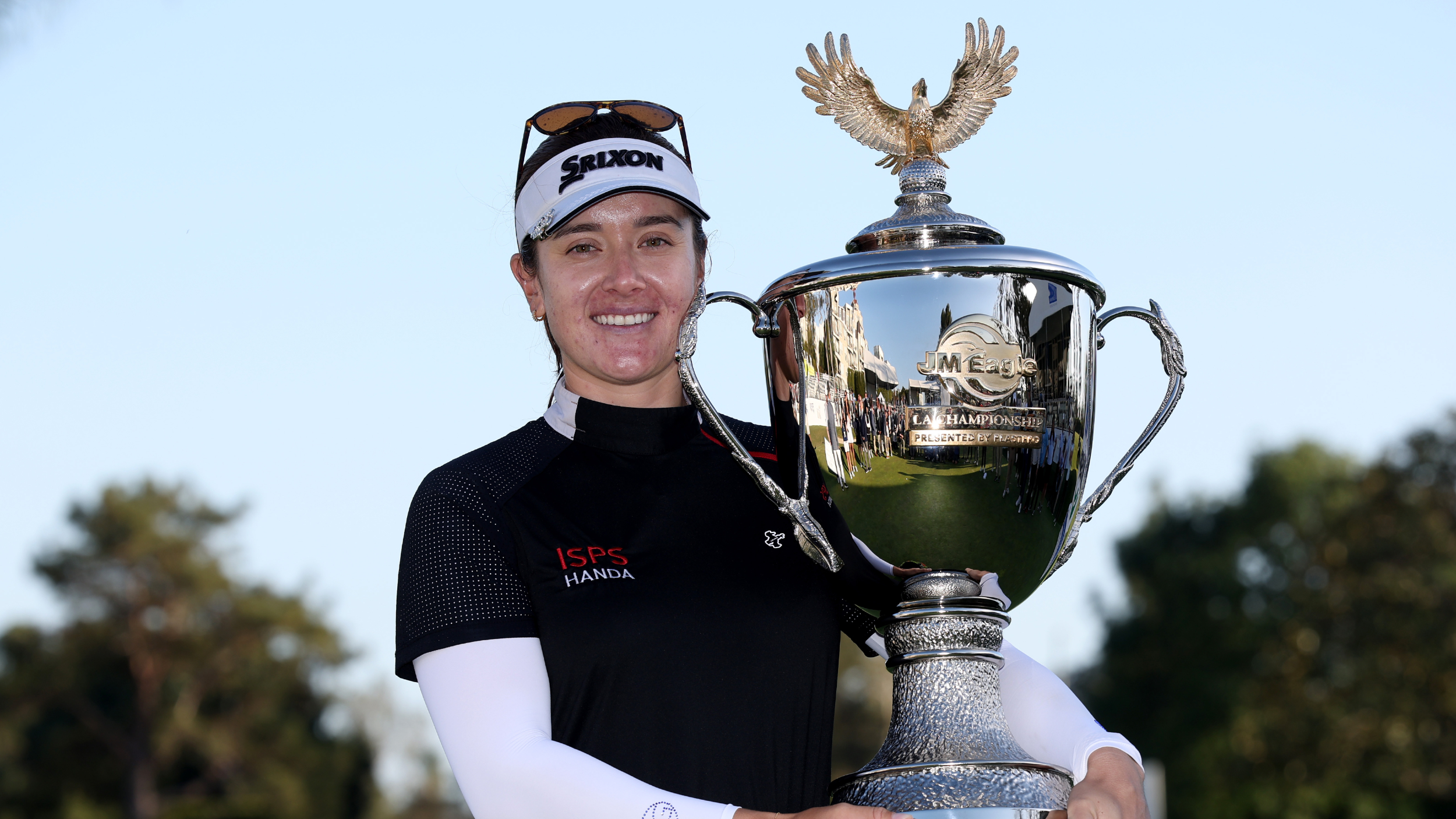Short Game Expert Dan Grieve Reveals Two Key Shots You MUST Add To Your Arsenal (The Results Could Transform Your Wedge Play)
Golf Monthly Top 50 Coach Dan Grieve shares his top tips for controlling spin in your short game...


Spinning the golf ball is one of the hardest things to do from around the greens, but it's one of the most valuable assets you can add to your game. The ability to make a good score when out of position could be the difference between saving par or a dreaded double-bogey, so it's well worth investing some time to practice the skill.
With that in mind, we enlisted the help of Golf Monthly Top 50 Coach and short game expert Dan Grieve to share two key shots you must add to your arsenal...
Why is spin important?
Getting the ball to check, spin and stop in the correct places will set-up crucial scoring opportunities that could save your scorecard. We see tour professionals do it all the time, often with apparent ease, but in truth it can be tough for amateurs to master.
To put it simply, it's all about creating friction. This tends to be heavily linked to the ground conditions and the equipment you are using. As you will see in the video above, we were playing off dry Bermuda grass, in perfect conditions, whereas with the wet and muddy lies that so many of us will be used to, you will lose a lot of that friction.
How can I increase spin with my wedges?

The first thing you can do to increase your chances of creating spin occurs before you even hit a shot. If moisture sets in between the clubface and ball, you won't see it grip into the grooves through impact. If you are practicing on the range, or out on the course, make sure to clean away any 'green gunk' that has accumulated in the grooves of your wedges as this will kill your control when it matters.
To generate maximum spin, it's so important to ensure you are using the best wedges, with clean grooves, and a premium golf ball.
Shot 1: The low check and release to a back pin
It goes without saying that picking the right shot at the right time will immediately improve your chances of lowering your score on any given hole. When making contact for a low flighted spin shot to a back pin, you must get the ball to make contact with the grooves.
Get the Golf Monthly Newsletter
Subscribe to the Golf Monthly newsletter to stay up to date with all the latest tour news, equipment news, reviews, head-to-heads and buyer’s guides from our team of experienced experts.
I call this a 'release one', which is a chip and run style shot. We want to encourage a release through the action, which is basically how the clubhead swings through the ball, with the butt of the grip finishing somewhere near your front hip in the follow through.

You can do this with any of your wedges, but the difficulty increases with more loft. Start with the ball on your back foot, and create a little bit of shaft lean, but make sure you still release the clubhead.
You want to feel like the ratio between your backswing and follow through is slightly longer on the way back and shorter on the way through, which allows you to trap the ball with a low flight and a high amount of friction.
It's also important to consider grip pressure, as if you squeeze too tight the ball is going to jump off the clubface. I have taught tens of thousands of amateur golfers and I don't think I have ever told any of them to grip it tighter, so be sure to create that nice relaxed feel with the club in your hands.
Shot 2: The short-sided spin and check
If you find yourself in a position where you don't have a lot of green to work with, on that short, sticky grass around the fringe and run-off areas, the right shot is to carry it onto the putting surface and let it feed towards the hole. Many amateurs would choose to putt from this position, but it can be quite tricky to judge.
This shot requires what I would call a 'release two', where the butt of the grip starts to point somewhere towards the belt buckle just after impact. That helps to transfer the energy from the grip into the clubhead, imparting a little more spin and getting the ball to come off nice and soft.

The lie is absolutely vital to look at in this situation. If you have a tight or firm lie, and you don't feel as though you can work the bounce of the wedge through the ball, you might be opening yourself up to a thin shot that ends up on the other side of the green.
Again, using a light grip pressure, feed the club through and use the bounce. Turn through the ball, ensuring that release finishes around the belt buckle, which should create some check and a release towards the hole. Once you make contact, make sure to keep the chest moving and avoid keeping your head down for too long through impact.
It can be scary to commit to a shot like this, especially when you are generating speed in your swing around the greens. You don't need to be perfect to play this shot, and you have actually got quite a big margin for error. By using the bounce, and feeding the club through as I outlined above, you should still get a respectable result even if you catch it a little bit thin.

Location: Woburn GC
Dan is one of the leading coaches in the UK, a Fellow of the PGA and a short-game virtuoso. He has had considerable success with a collection of tour pros, helping them to Order of Merit titles and major victories, and his Short Game School is the most attended in the UK. His students, past and present, include Charley Hull, Georgia Hall, Inci Mehmet and Iona Stephen.
Most common problem:
Swing – over the top , help by getting the basics correct at address and making them aware how to get the club online coming down.
Short game – creating spin and feel around the greens, help by educating on what the short game actually is (weak on purpose) and understand bounce and how they can apply it to different lies/situations.
Greatest success story:
Helping Georgia Hall from World No. 450 to No. 6 and winning a Major, two Order of Merits and Solheim Cup appearances.
Greatest teacher:
Alex Hay was a great influence during my first few years at Woburn. In sport more generally Sir Clive Woodward has taught me how to deliver at the highest level.
Most common fault:
Flipped right hand (hands behind the ball). Understand a correct coil/load going back and how to sequence better coming down so the chest opens up and gives the arms space to deliver a stronger impact. Lots of body action drills to enhance the feel, with and without the ball.
-
 Rory McIlroy's Masters Win More Popular Than Tiger Woods In 2019 As Incredible TV Ratings Released
Rory McIlroy's Masters Win More Popular Than Tiger Woods In 2019 As Incredible TV Ratings ReleasedMcIlroy's role as golf's primary needle-mover continued on Sunday as the Northern Irishman's fifth Major attracted an awful lot of eyeballs in the USA...
By Jonny Leighfield
-
 JM Eagle LA Championship Prize Money Payout 2025
JM Eagle LA Championship Prize Money Payout 2025The LPGA Tour heads to California for the JM Eagle LA Championship, where the largest prize money payout of the season so far is on the table
By Mike Hall